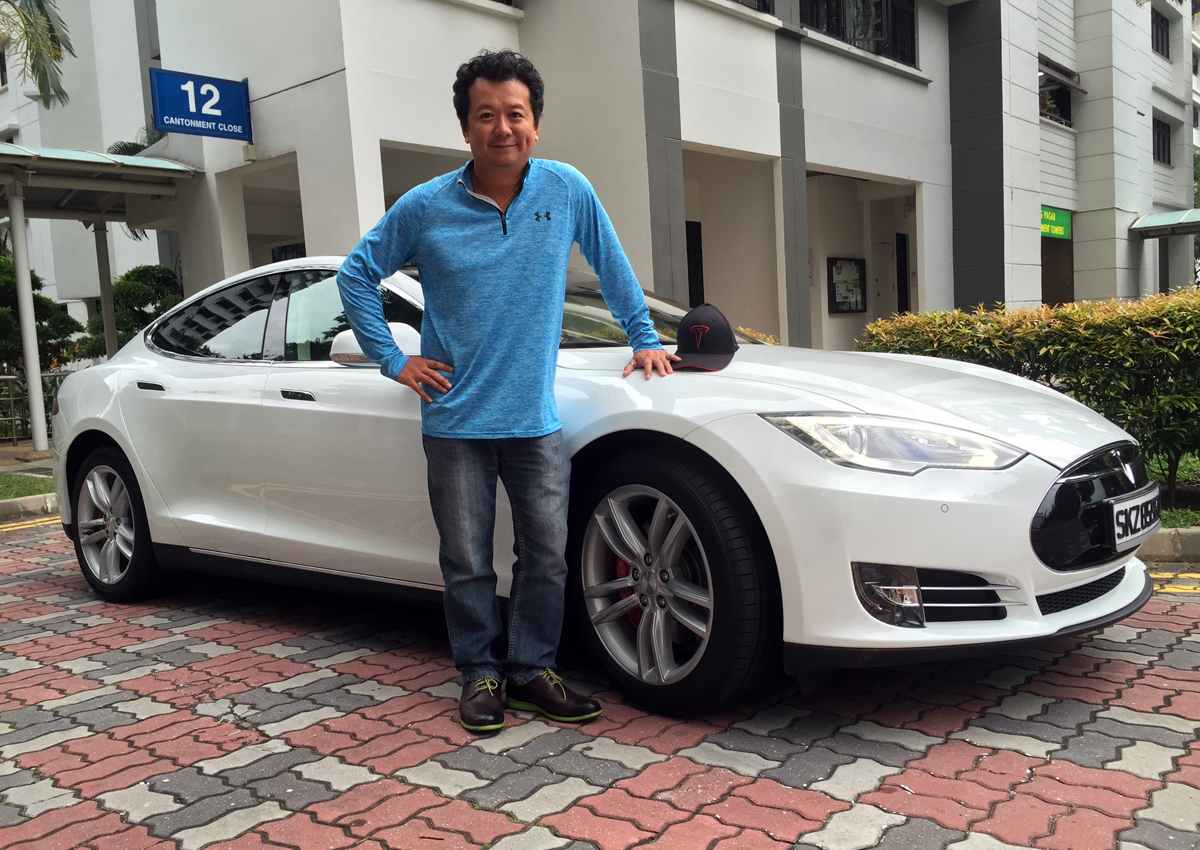Singapore – TESLA is working with Singaporean authorities to conduct tests again on one of its cars here that was slapped with a S$15,000 carbon emissions surcharge, a spokeswoman of the US car company has told BT.
The Land Transport Authority (LTA) of Singapore said on Thursday that it imposed the surcharge on an imported and used Tesla Model S – the first and only one here – because tests showed that its power consumption hit 444 watt-hour/km.
The car is owned by Joe Nguyen, senior vice-president at an Internet research firm, who paid almost S$400,000 for it and imported it from Hong Kong.
Factoring in 0.5g/watt-hour of carbon dioxide emissions from powering the car, its emission was deemed to be 222g/km, which put it in the S$15,000 surcharge band under the Carbon Emissions-based Vehicle Scheme (CEVS).
Tesla Motors previously informed LTA that the energy consumption of the Model S was 181 watt-hour/km when it left the Tesla factory on June 28, 2014. This means that the brand new Model S would have qualified for a S$30,000 rebate, LTA noted.
The authority had said that it and VICOM Emission Test Laboratory, which conducted the test, were in touch with Tesla’s engineers to see how testing processes for electric cars can be done.
Tesla told BT on Friday that it was also looking to test Mr Nguyen’s car again.
“We believe the test was likely not properly conducted, and we are working cooperatively with LTA to test the car again,” said Scarlett Au, a spokeswoman for Tesla, in response to BT’s queries, which included what the maker thought of the car seeing its power consumption increasing to 444 watt-hour/km in a little under two years.
Tesla said Model S cars have a much lower carbon footprint than cars powered by petrol, evidenced by the 181 watt-hour/km power consumption of a brand new car.
In addition, oil extraction, distribution and refining would result in about 25 per cent more to calculate the real carbon footprint of petrol-powered cars, Ms Au said.
“Moreover, as Singapore increases the percentage of grid power from solar and wind, the CO2 (carbon dioxide) from electricity drops with each passing year,” she said, referring to the power that electric vehicles draw from power grids.
A specialist on renewable energy that BT spoke to, however, said that there is a certain limit to how much Singapore can diversify its sources of energy – which would have an impact on the minimum level of emissions the national power grid produces.
“In America, you can install large numbers of solar panels in the desert. In Singapore, we have to be dependent on rooftops on buildings. There’s only so much you can do,” said Ashish Sethia, head of India and South-east Asia for gas and power at Bloomberg New Energy Finance.
Mr Sethia agreed that it was reasonable to consider how much power an electric vehicle draws from the grid. “That’s carbon produced from using the grid. There has to be some carbon footprint right there.”
soonwl@sph.com.sg

This article was first published on March 12, 2016.
Get The Business Times for more stories.






